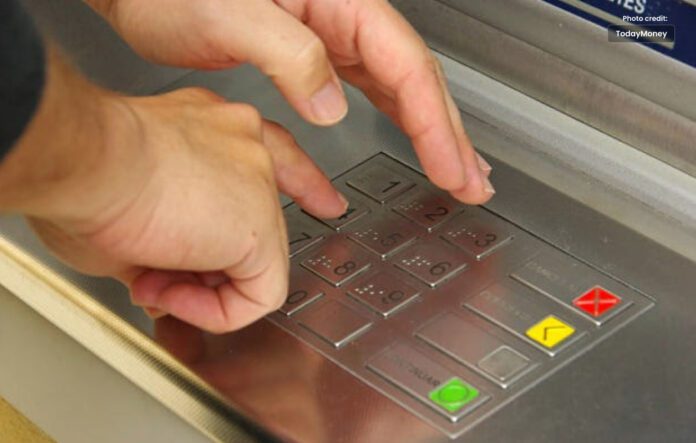Drive-through ATMs with Braille cater blind users, aiding their needs.
Nonetheless, every ATM must display those letters according to federal regulations.
A comprehensive human rights law that forbids discrimination based on disability and stringently mandates specific accommodations for the disabled is known as the Americans with Disabilities Act (ADA), which was enacted into law in 1990 and modified in 2009.
One of those adjustments is that all ATMs, even those found at drive-through lanes, have Braille on the buttons.
The ADA’s accessibility standards mandate that “persons with vision impairments shall be made to independently use the instructions and all information for use [of an automated teller machine].” All ATM buttons must be equipped with Braille bumps that are located just below the corresponding text, according the regulations.
Drive-up ATMs should not be required since blind persons cannot operate a vehicle. According to the American Bankers Association’s argument before the regulation was finalised.
The Architectural and Transportation Barriers Compliance Board said that a driver’s assistance “would not allow the [blind] individual to use the ATM independently.” The ABA had claimed that the driver of the car could assist the blind passenger with the ATM transactions.
Because they would have to offer their personal bank information or debit cards to the driver in order to complete the transaction, blind people who need to ask a driver to make their ATM transactions for them run the risk of jeopardising their privacy.
Hence, despite the fact that having Braille on drive-through ATMs may initially seem meaningless, blind people can really use the devices and do so.
A driver with a blind passenger in the back seat only needs to move forward a little to let their person get to the ATM and conduct business.




